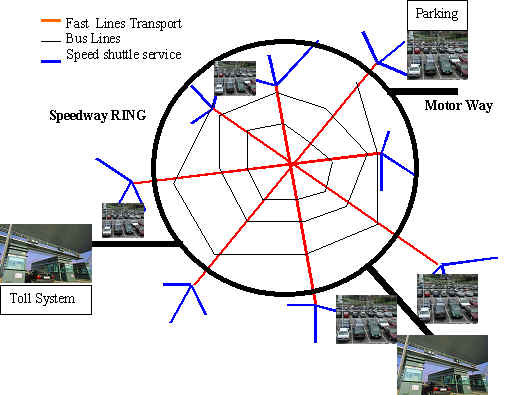|
|
|
|
|
integration within and between different
types of transport - so that each contributes its full potential and
people can move easily between them;
| integration with the environment - so
that our transport choices support a better environment;
| integration with land use planning - at
national, regional and local level, so that transport and planning work
together to support more sustainable travel choices and reduce the need to
travel;
| integration with our policies for
education, health and wealth creation - so that transport helps to make
a fairer, more inclusive society. | |
To realize these objectives we need to develop a new approach, it is a long term strategy to deliver sustainable transport. It is also a strategy for modernization that harnesses the latest developments in technology:
| promote the public interest; | |||||||||||||
produce better public transport, with easier,
more reliable connections;
| improve choice between different modes;
| enhance public transport networks;
| encourage more through-ticketing;
| provide better travel information;
| ensure more reliable and frequent services;
| give the passenger a bigger voice in public
transport. | |
reduce road traffic growth;
| respond to the challenge of climate change;
| limit the visual intrusion caused by
transport;
| reduce use of non-renewable materials/energy
sources;
| ensure that environmental impacts are taken
fully into account in investment decisions and in the price of transport;
| enhance public awareness of transport and
environment issues. | |
Traffic Infrastructure Development Plan
The Trend in the modern cities is:
|
Having a complete pedestrian area in the Center of the City | |||||||||
|
Having a Public Transport Network based on a SPIDER NET
|
New trends, based on Belgian, Dutch, French, Italian, Spanish experience push further the City infrastructure
|
by creating a Speedway (RING) around the city with large parking facilities. | |
|
by creating a Peripheral Boulevard around the City | |
|
by controlling or forbidding cars inside the City Center | |
|
by controlling the cars that want to enter inside the City using Toll System | |
by creating Office & Industrial Park outside the city around the RING. |

| Speed Shuttle | ||
|
BUS |
||
|
Metro RER |
The Modern city then will have the following structure

Example: Villeneuve D'asco in France

Example of Sustainable Traffic development
Curitiba, Brazil - The city of Curitiba, Brazil, has integrated sustainable transport considerations into all of its plans for business development, road infrastructure development, and local community development. Curitiba first outlined a preliminary urban plan and a Master Plan in 1965, with the main goals of limiting central area growth and encouraging commercial and service sector growth along two structural north-south transport arteries, radiating out from the city center. The Master Plan also aimed to provide economic support for urban development through the establishment of industrial zones and to encourage local community self-sufficiency by providing all city districts with adequate education, health care, recreation, and park areas. With the structural transport axes, the Master Plan ensured linear development of the city, reducing the traditional importance of the downtown area as the primary focus of all transport activity, thereby minimizing congestion. The plan called for the integration of traffic management, transportation, and land- use planning to achieve its goals, and maintained flexibility in its regulations to allow for different future development scenarios. The Master Plan also proposed the creation of the Institute of Urban Research and Planning of Curitiba (IPPUC) to coordinate, modify, and oversee Plan implementation.
Zoning
and Land Uses
| Layout
of the Road Infrastructure
| Design
of the Arteries
| The
Bus System
| Results
of the Bus System
| No motorized
Transport and Pedestrian Facilities | |
Example in Europe, the Program MOSES
|